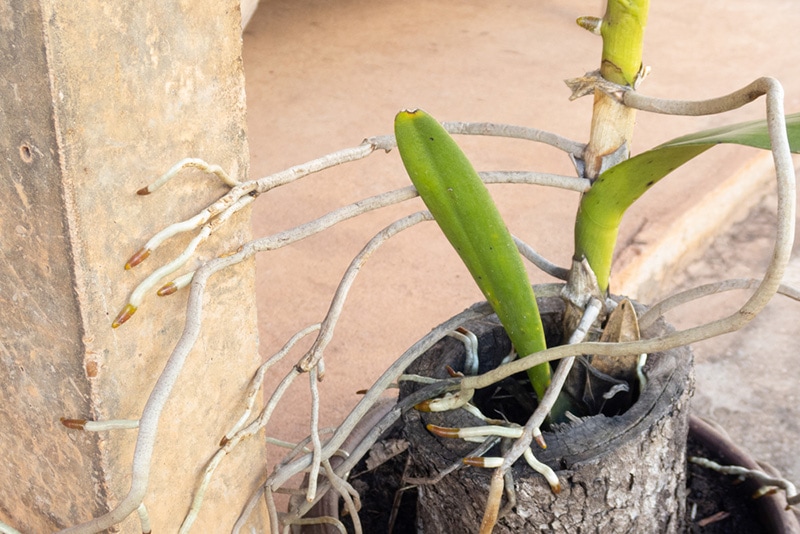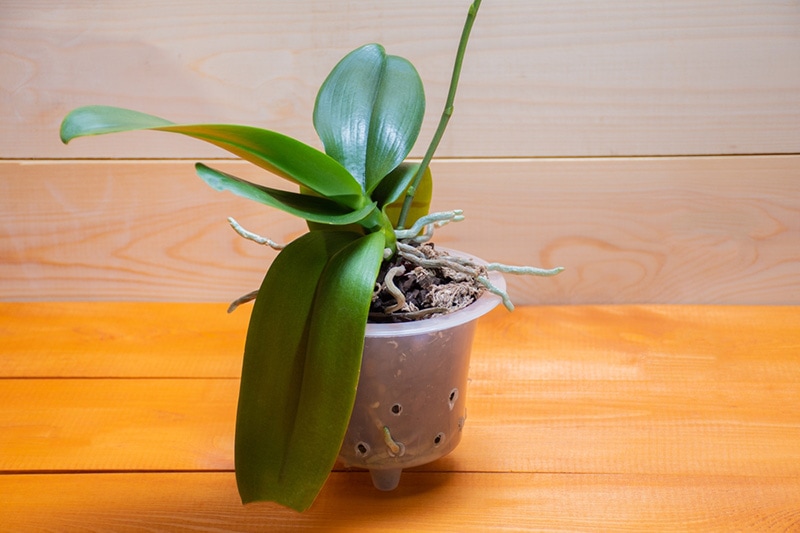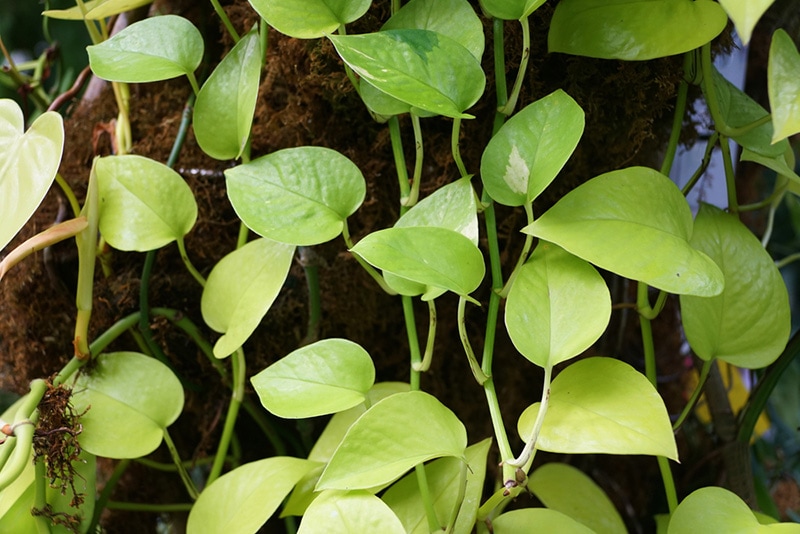What Are Aerial Roots? The Interesting Answer
-
Jana Blagojevic
- Last updated:

If you enjoy growing houseplants—especially monsteras and orchids—it might be a while before you begin noticing strange growths developing from the plant’s stem. If your orchid starts growing these mysterious branch-like vines, you may worry something is wrong.
Aerial roots are a type of rooting system developing on the plant’s stem above the soil. These roots act as sponges that absorb water and nutrients from the air. Most houseplants don’t rely on these roots to survive, so sometimes, it can be okay to prune them.
Keep reading the article below for more information on handling aerial roots without harming your plant.
How Do Aerial Roots Work?
When we think of roots as the most important part of the plant’s structure, we tend to envision small vines spreading and developing deep underground in search of water and nutrients. These roots are the main characteristic of most plants, although there are other types of roots you are less likely to stumble upon.
Aerial roots are a rooting structure that allows the plant to grow without any soil present. These plants are not deeply rooted in the ground but have a rooting system that develops in the air. These roots play several important roles, and while only certain plant species have them, some plants can produce them when there are not enough nutrients to extract from the soil.
Aerial roots can also be manifested in certain types of plants called epiphytes. Epiphytes are air plants that only grow aerial roots and develop on other plants or objects. Even though these plants grow on other host plants, they don’t take up their nutrients and only use them for physical support.

Different Examples of Aerial Roots
Many plant species use aerial roots to survive instead of the more common grounded roots. Some of the common houseplants that will develop aerial roots are:
Hoya
Hoyas grow in the form of vines, and aerial roots serve the purpose of collecting additional nutrients and water from the air. They also support the plant by anchoring it.
Pothos
This plant is a climbing species that uses aerial roots to cling to and support itself against trees and rocks. The aerial roots are also used for collecting nutrients and water.

Monstera deliciosa
Monsteras have some of the most prominent aerial roots, firm and brown, reaching several feet in height. These plants are common houseplants, although when in nature, their aerial roots can climb and attach to trees, rocks, and other structures.
Philodendron
If philodendrons grow in the wild, they will attach their aerial roots to other structures to climb and use to receive extra nutrients from the air. When these plants are used as houseplants, you can prune their aerial roots without any harm being done.
Orchids
Since orchids are one of the most common houseplants, their aerial roots can be easily noticed. They aim to anchor the plant and support it while absorbing nutrients and water from the atmosphere.
Other plants that tend to develop aerial roots when needed are Kalanchoe and Ficus plants, and you can notice them in a wild climbing plant called the English Ivy. English Ivy shows aerial roots, and they are dense, small, and incredibly strong. Aerial roots allow English Ivy to climb to certain structures such as brick walls, which is why they commonly cover the walls in a carpet-like manner. One downside of aerial roots that are this strong, is that they can quickly cause structural damage to the house by spreading into cracks and joints, causing further damage.
What to Do with Aerial Roots?
If you are a true houseplant lover, you will surely notice some of your plants growing aerial roots. This doesn’t always have to be due to a lack of nutrients from the soil, and the roots can sometimes become an unnecessary addition. Depending on which plant you are growing, there are ways you can take care of the aerial roots. If you dislike the appearance of your plant and it seems messy to you, you can always prune the aerial roots. To do this without any negative consequences, you need to use sharp and sterilized shears and cut them as close as possible to the stem.
On the other hand, if you’d like to keep the roots, you can cut them a bit shorter for a tidier appearance. Some plants will have aerial roots growing a few feet long, which can make the plant’s pot seem cluttered.
One plant that grows aerial roots which must never be disturbed is an orchid. Orchids will produce aerial roots and need them to survive. They will use them for anchoring and additional support, and for collecting more nutrients and water from the air. There are some who believe that aerial roots can help orchids with photosynthesis, and while these theories haven’t been proven, it is better to leave the aerial roots intact.
Advantages of Aerial Roots
There are many crucial roles that aerial roots play in the healthy growth of a plant. While some houseplants grow them as secondary roots and do not need them to survive, there are still some beneficial aspects to aerial roots.
- Aerial roots anchor the plant to nearby trees, rocks, trellises, walls, and fences, providing the plant with more stability and support.
- Aerial roots act as a sponge absorbing additional nutrients and water from the atmosphere, nourishing the plant.
- Certain plants, such as mangroves, grow in swamps, where there is little oxygen in the soil. These plants use aerial roots to “breathe” and get the oxygen they need from the air.

Disadvantages of Aerial Roots
Since aerial roots are a significant part of certain plants’ systems, they have very few disadvantages. That said, some drawbacks include:
- Some climbing plants grow aerial roots which are incredibly strong and sturdy, growing through walls and causing structural damage.
- Sometimes, houseplants can grow aerial roots that don’t serve any particular purpose. These roots can make your plants seem messy and neglected, and they may need to be pruned often.
Frequently Asked Questions (FAQs)
What happens if you bury aerial roots?
Aerial roots don’t have an important role in most houseplants. Since your indoor air is often dry, it cannot absorb much water or nutrients from it; unless you regularly mist the air. If you want your aerial roots to have a purpose, you can always plant them into the soil, and they will continue to draw nutrients normally as regular roots.
Can a plant survive only with aerial roots?
If your grounded roots die from rot or any other damage, the aerial roots will help your plant survive. Some plants that require aerial roots to survive, such as orchids, can survive only on aerial roots. In this case, the aerial roots will be the only source of nutrients, and removing them can be fatal to the plant.
Conclusion
While many plants develop aerial roots, which are not a necessity for them to survive, certain plants rely entirely on them to thrive and survive. Aerial roots can become the most important source of nutrients for some plants, so it is always recommended to leave them intact.
Featured Image Credit: possiblePricha, Shutterstock
Contents

